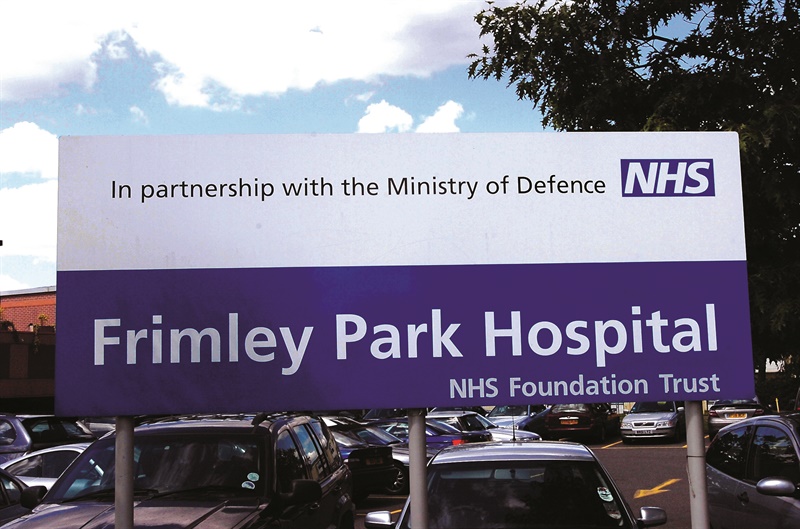28.09.14
Making hospital and health system consolidations work
Source: National Health Executive September/October 2014
Healthcare experts Jonathan Pearson, Colin Lewry and Greg Scrine discuss the history – and the future – of mergers in the sector.
"Between 1997 and 2003, over half of the 200 or so acute NHS hospitals in England were involved in a merger in which at least one hospital trust was absorbed into another. The scale of the consolidation was such that the average number of hospitals in a local health economy fell from seven to five."
This quote is taken from a recent study (1) that concluded that these mergers failed to deliver their promised improvements (2). That may partially explain why there has been little merger activity amongst acute providers in recent years.
But it is clear that the relative calm in UK merger activity of the past seven years is ending. In 2013, the UK Competition Commission rejected the merger of Royal Bournemouth and Christchurch Hospitals NHS Trust and Poole NHS Trust (3). That decision, and the delays and expense leading up to it, resulted in changes in governance and political tone that make it far more likely that mergers will be a key tool in addressing a growing case for change.
And we have found that the case for change is growing:
- In 2008-09 the NHS embarked on a process to generate £20bn in productivity improvements by 2015, requiring providers to make substantial recurrent efficiency savings of 4% per annum. Having broadly achieved this objective, the NHS now faces a further challenge related to a projected funding gap of up to £30bn in the period to 2020-21. (4)
- The drive for seven-day working and for better quality and outcomes increases the need for savings, because it is more expensive to operate outside of traditional hours. However, it is also driving consolidation. For specialist services, there is a strong body of evidence (5) that an increasing number of clinical services are better concentrated in fewer centres undertaking higher volumes of activity. There is now a major drive to push the consolidation of specialist services further, with the potential to remove significant volumes of specialist activity from smaller hospitals.
- Patients consistently report that they expect the health services they use to be more joined up and better integrated. There is also considerable evidence (6) that new models of integrated care can be more effective, can provide better patient experience and can support health systems to meet future demand. The activity shifts demanded by this change will drive merger and acquisition activity.
So, merger activity is a likely fact of life in the next 10 years – but history shows that mergers do not release the benefits that drive them. Through our work in trusts across the UK and abroad, we believe that mergers or hospital federations can deliver savings and improve care.

(Above: Monitor has just approved the take-over of one foundation trust, Heathwood & Wexham Park Hospitals, by another, Frimley Park Hospital, for the first time.)
Areas of opportunity
Key sources of value creation through consolidation can be considerable and have positive effects on cost, capacity, access and quality of care, but require operating as an integrated system. Bringing two operations together generally takes one of three approaches:
1) Merge the functions, creating economies of scale, reducing management requirement and sharing good practice. This is most appropriate for functions with a large variable component.
2) Remove one of the functions, strengthening the remaining function to deal with increased workload. This is most appropriate for functions with only a small variable component.
3) Outsource the whole function. The merged organisation’s new size may make the outsourcing of the entire function cost effective.
Whatever approach is taken, there are opportunities for efficiency.
- If separate clinical services are considered as one unit, excess capacity can be reduced;
- Reconfiguration of services reduces the need for duplicate on-call service, overnight staffing and some specialist roles;
- Shared best practice between a larger group of consultants allows greater comparison of productivity and quality between the two organisations and between consultants;
- Larger buying power should result in a reduction in procurement costs;
- Reducing the number of sites from which the merged unit operates;
- A larger pool of staff should reduce reliance on locums and agency staff;
- There are significant gains to be made from administration, including shared management, shared medical records and economies of scale;
- As property, plant and equipment are removed, soft facilities management expenditure reduces significantly;
- Diagnostics is a key area of opportunity that is already seeing large opportunity through federation. Pathology costs have a high fixed element, and as such large increases in workload can be accommodated for a small increase in cost; and
- Many aspects of the back office can be rationalised through merger and resultant economies of scale.
The challenge
While the cited benefits of consolidation – such as cost reduction, improved access to capital, clinical scale and improved market position – seem attractive, the reality of achieving such benefits is often far more challenging than anticipated at deal conception. Over the past 20 years, most have failed to meet initial expectations. (1)
Making such consolidations work to achieve promised cost savings, clinical scale advantages and market position improvement requires careful pre-deal assessment of compatibility and a holistic and rapid post-deal integration across key dimensions, which often don’t get the attention needed until it is too late.

Our point of view
Through our experience, and after having reflected on 20 years of health system transactions in the UK, we see the following seven elements as essential to driving consolidation success and achievement of consolidation goals.
International experience shows that any plan to merge or take over trusts benefits from a management model being in place in one that you can replicate in the other. This is vital where one trust is being merged because of existing problems, as we believe that little change is often made below executive level to address the known issues through ensuring that appropriate performance management and other management systems are put in place. The merged entity needs to plan to quickly put in place its key elements – performance management; demand and capacity planning; operational grip processes; financial and budgeting controls; rostering; and non-core back office functions (payroll etc).
Deals are often conceived around back office and fixed-cost reduction opportunities. While these are important financial contributors, these cost reductions alone rarely lead to consolidation success.
Clarity around the clinical and commercial modelbeyond the cost side is paramount. This means a proactive and realistic plan for the consolidation of key elements such as the medical staff organisation, management and staffing models, care delivery models, service rationalisation, commissioner contracting and employer relationships, IT infrastructure, and patient perception. Too often it’s a pro forma that shows savings and a combined market share number that rationalises the deal. This, coupled with the view that the above elements will get ‘figured out’, is enough to close the deal and consolidate successfully. History suggests otherwise.
While clarity on the consolidation model is essential, closely related is the speed with which the consolidation occurs. When a deal is done, there is an expectation of change amongst all parties involved. Cultural, management, staff, operating and clinician dynamics all become more fluid. It is while this fluidity exists that integration is most able to occur. If, on the other hand, the deal is done but little changes in the near term, historic dynamics will re-solidify making change and true integration significantly more difficult. We believe that this time of fluidity lasts about nine to 12 months from deal close. While the integration of a given function does not necessarily need to be completed in that time, it should be initiated so as to communicate to the broader organisation that this element is changing.
It is often assumed that management cultural differences can be worked out. This is true at the senior level where the deal gets done, but at the next level the managers will not have gone through the same process as their seniors. The result can be mistrust and fear of losing their jobs or power. It is imperative that the management culture gets as much focus as the medical culture. This should not be confused with the management model – in our experience, the managers in many trusts would be only too pleased to get new tools and approaches to issues like performance management, specialty information and demand and capacity planning, but they do not want to feel that their culture is being completely eradicated.
For health system consolidations that occur in a given geographical market, clinician cultural alignment and buy-in is perhaps the single most important element that drives integration success. While the ‘clinician culture challenge’ mirrors the ‘management culture challenge’, it is different in some very important ways that, depending on the situation, can be very difficult to resolve. Not least of which is that in many circumstances, clinicians involved with the parties are independent economic entities and also may have relationships with competing organisations in the same market. Bringing disparate ‘clinician entities’ together can be complicated, but a desire for a sustainable quality and financial position is usually a place where they can agree.
A strong motivator of consolidation within a geographic healthcare market should be clinical programme synergy and/or rationalisation. This potential is often cited in the pre-deal rationale and business case, and it is typical to attribute savings to consolidations. The reality is often different than the business case. Provider organisations are loath to give up any profitable service, and changing referral patterns can be incredibly difficult. Despite the bias toward the status quo and the significant challenge programme consolidation represents, it is our view that programme rationalisation should be a high priority for pre-deal planners and post-close execution. This is one element whose success is highly impacted by execution speed. All efforts should be made to formulate the programme rationalisation plan prior to the deal and drive execution immediately following deal close.
Information technology is the nervous system for a modern healthcare provider organisation. Integrating such systems following consolidation can be a monumental task. Integration does not necessarily mean the adoption of a single electronic medical records system or other core application amongst the parties. What is necessary is an integrated governance, standards setting and data-sharing approach – in that order. IT environments have become enormously complex. The first step to managing the complexity in a coherent manner is the establishment of a unified informatics governing structure of system leaders from technology, clinical and management disciplines. With a governance structure in place, common standards for information elements can be created. It is essential that apples to apples comparisons of all types be available across the consolidated organisation. Finally, with standards set, a health information exchange infrastructure must be established to create a free flow of data across applications and users.
Conclusion
The market pressures driving consolidation seem likely to only grow in the foreseeable future.
At the same time, consolidation itself poses risks to both the acquired and acquiring organisations.
With so many of these initiatives under consideration, it makes sense for senior leaders to carefully reflect on the history of health system consolidation and the key factors that, at the end of the day, make such arrangements work or fall apart, sometimes in spectacular fashion.
If this next wave is to be the success that everyone needs it to be, then trusts will need to act at speed to align clinicians, managers, culture, information systems and structures against a clear strategy to drive real benefits for patients and staff.
About the authors
Jonathan Pearson (left) is deputy managing partner and Colin Lewry (right) is partner at GE Healthcare Finnamore.


Greg Scrine (below) is principal at GE Healthcare Partners.

References
1 The Centre for Market and Public Organisation (CMPO). ‘Can governments do it better? Merger mania and hospital outcomes in the English NHS’, Martin Gaynor, Mauro Laudicella and Carol Propper, January 2012
2 Ibid., results section, page 13.
3 HSJ 17/10/2013.
4 NHS: A Call to action, NHS England 7/2013.
5 London Cancer Specialist Services Reconfiguration: A case for change in specialist cancer services. Pelham Allen, Professor Kathy Pritchard-Jones, Dr Jeremy Rees, Mr Andrew Elsmore, Mr John Hines, Mr Simon Whitley, Professor Muntzer Mughal, Mr David Khoo, Dr Kirit Ardeshna, October 2013
6 King’s Fund
Tell us what you think – have your say below, or email us directly at [email protected]